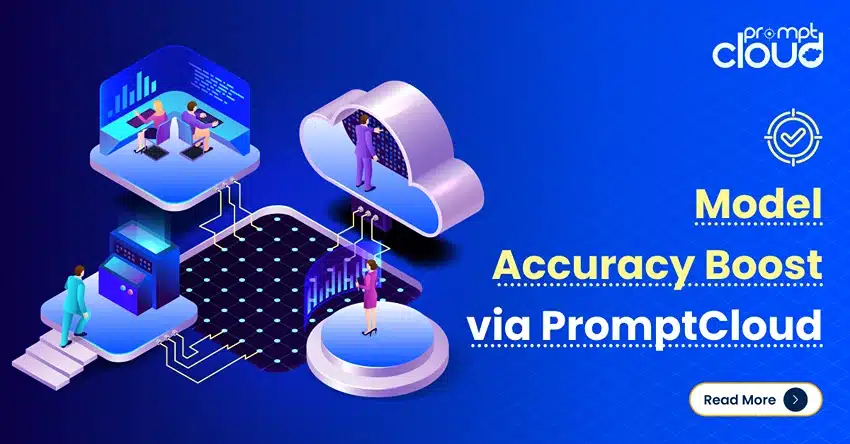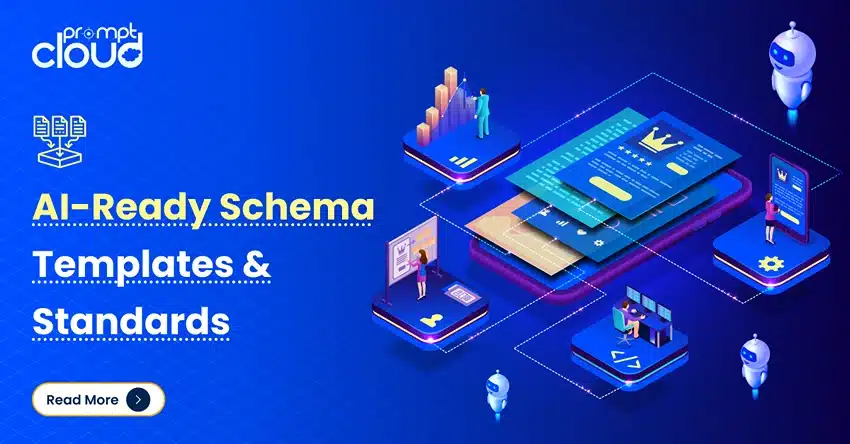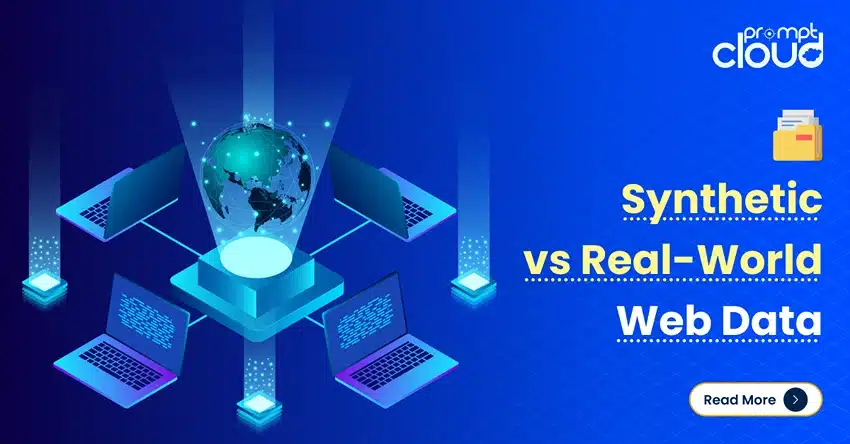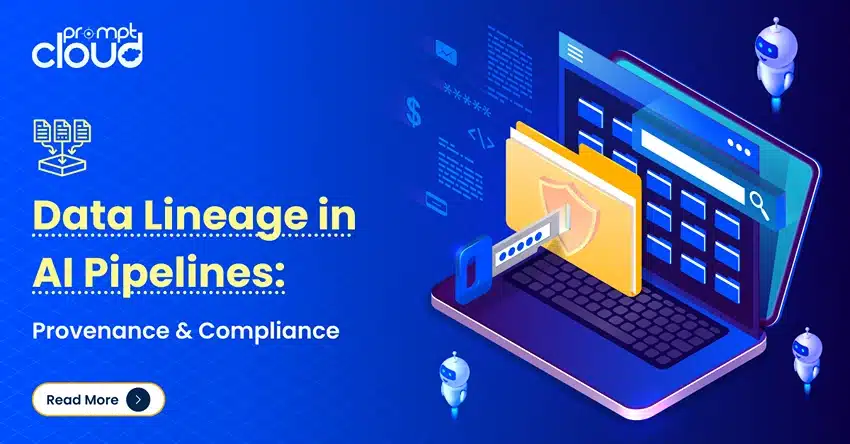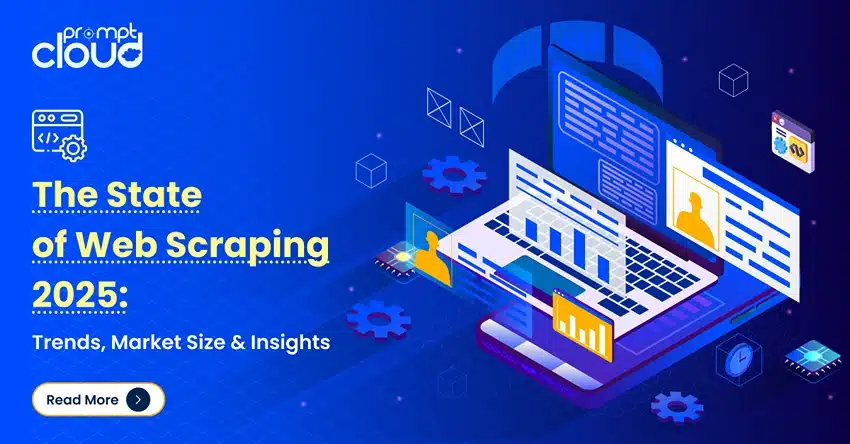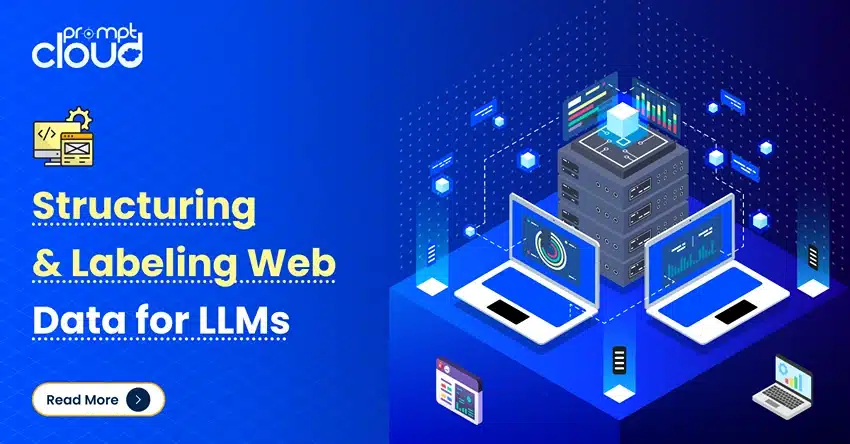
Fashion has always been about vision. The problem is, vision alone doesn’t scale anymore.
Trends move faster than production cycles. Shoppers expect personalization, not guesswork. And brands that still rely on seasonal instinct are getting left behind by competitors who’ve made peace with one truth: data is the new creative partner.
Fashion analytics isn’t about killing creativity. It’s about making sure the right ideas reach the right people at the right time. It’s how Zara reacts to a trending style within weeks, while legacy players are still “reviewing next season’s moodboard.” It’s how luxury labels are using customer behavior to craft personalized experiences that feel bespoke, because, well, they almost are.
The fashion industry isn’t just using data. It’s being rebuilt by it. From real-time insights scraped from fashion apps to AI-generated demand forecasts, fashion data analytics is now the backbone of decisions, from design to shelf.
This isn’t a trend piece. This is about survival, scale, and smarter fashion. Whether you’re running an online-only streetwear brand or overseeing digital strategy at a heritage fashion house, data isn’t optional anymore. It’s the difference between almost catching a trend and owning it.
How Fashion Analytics Helps Brands Spot Trends Before Everyone Else
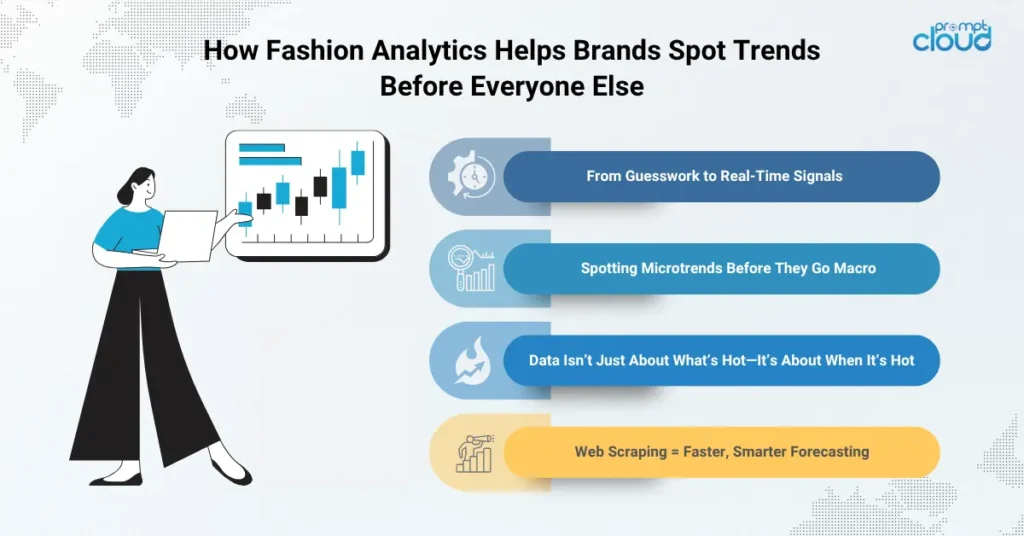
Trends don’t build slowly anymore. They appear out of nowhere—on TikTok, Pinterest, Instagram—and disappear just as fast. If you’re relying on quarterly reports or “let’s wait and see” meetings, you’ve already missed it.
That’s where fashion analytics changes the game. It gives brands a window into what’s happening right now, not three months from now.
From Guesswork to Real-Time Signals
Think about how things used to work. A designer would spot something on the runway or the street, merchandisers would look at last season’s sales, and then someone would place a bet on what might sell next.
Now, brands can see actual signals from the market:
- What people are searching for online
- Which items are trending on resale platforms
- What’s sitting in carts but not converting
- What’s being talked about across social feeds
This kind of visibility—powered by fashion data analytics—means you’re no longer guessing. You’re watching the market in motion.
Spotting Microtrends Before They Go Macro
Shade, weave, silhouette-the tiniest details can suddenly spiral into sweeping change. That alchemy works only if the moment is seized before it tops out.
Picture sheer mesh crews beginning to litter digital mood boards, TikTok styling reels, and youthful threads of subreddit chatter. The trend has not yet broken into the mass market, yet the surface is visibly agitated. A smart brand that’s scraping data from fashion apps and social channels will see that pattern way before it hits the high street.
By the time other brands notice? You’ve already designed, produced, and dropped the collection.
Data Isn’t Just About What’s Hot—It’s About When It’s Hot
Timing is everything in fashion. A great idea launched two weeks too late can flop. Fashion analytics helps brands not only see what’s trending but when a trend is likely to peak, and when to move on.
This helps avoid overproduction (hello, markdowns) and underproduction (cue stockouts and missed revenue). Fast fashion brands like Shein have practically built their model on this kind of real-time responsiveness.
Web Scraping = Faster, Smarter Forecasting
To get all these insights, you need data. Not just sales data, but signals from across the digital ecosystem. That’s where web scraping fashion apps, forums, e-commerce listings, and trend-heavy platforms gives brands a serious edge.
It’s like having a front-row seat to the global fashion conversation—every minute of the day.
Design, Produce, Repeat: Faster (and Smarter) with Fashion Analytics
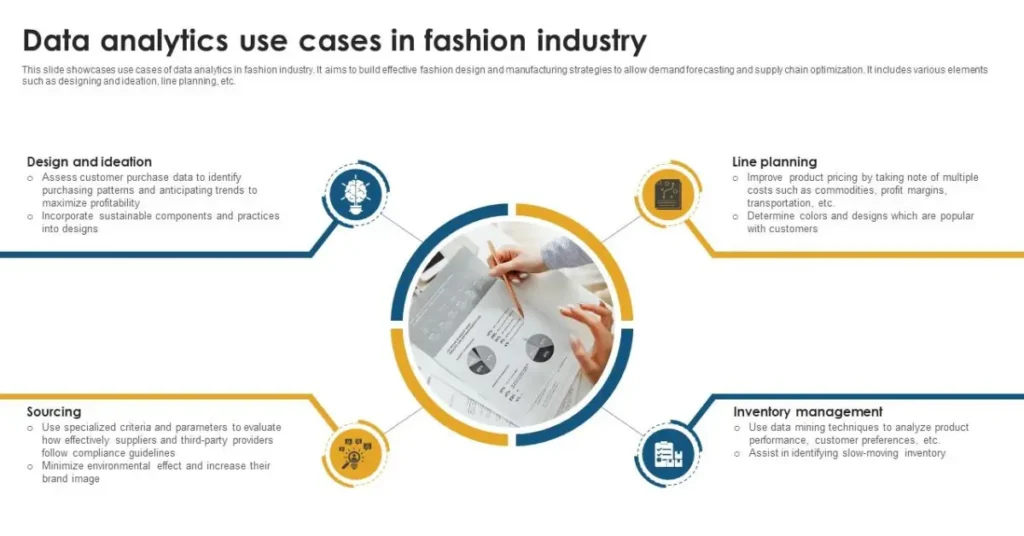
Image Source: SlideTeam
Fast fashion isn’t just about moving quickly—it’s about knowing exactly what to move on, and when. That’s a huge difference. Speed without direction is chaos. Speed with insight? That’s where fashion data analytics comes in.
Turning Customer Behavior Into Creative Direction
Fast-fashion companies look at numbers and graphs before they ever sketch a new tee. The charts almost tell designers, Start right here.
Each swipe, click, return, or add-to-cart is a tiny hint. If someone wonders whether cargo skirts are making a comeback, they dont wait for a monthly report-just peek at what Gen Z is eyeing on Urban Outfitters or Zara.
New analytics programs chew through all that shopper behavior and spit out clues nobody on the floor would spot. Wide-leg pants, once dismissed as a one-off, keep showing up in every file, hinting at a bigger change in cut. Those quiet nudges can end up deciding an entire drop.
Smarter Inventory, Less Waste
Here’s one of fast fashion’s biggest pain points: overproduction. You move fast, you produce at scale, and if you miscalculate demand? You eat the cost in markdowns or unsold stock.
Fashion analytics helps fix that. By feeding product demand signals directly into production decisions, brands can dial in how much to produce, in which sizes, for which stores or markets. And when real-time sales data starts coming in? You tweak. Reorder bestsellers, quietly phase out duds. No emotion, just data.
The result: better sell-through rates, fewer deep discounts, and less stuff heading to landfills. It’s better for business—and better for the planet.
Fast Doesn’t Mean Sloppy
There’s a myth that fast fashion means cutting corners. But some of the most operationally tight companies in the game are fast fashion labels using fashion data analytics to make extremely calculated decisions.
Zara, for example, is famous for its data loop between stores and design teams. Store managers send feedback on what’s selling, what’s being asked for, and what’s sitting. That feedback turns into design decisions in days, not months. The goal isn’t just speed—it’s informed speed.
And increasingly, brands are using web scraping fashion apps to expand that loop, gathering signals not just from stores but from platforms where trends are actually starting: Depop, Instagram, even YouTube hauls.
Data Is the Engine—Not the Driver
Here’s the thing: data doesn’t replace creativity. It supports it.
Designers still design. Merchandisers still build stories. But now, they have sharper tools. Instead of guessing or hoping, they’re using fashion analytics to back their instincts with evidence. That doesn’t kill creativity—it gives it legs.
How Luxury Fashion Uses Analytics Without Losing the Magic
Luxury and data might sound like opposites. One is built on emotion, legacy, and storytelling. The other? Numbers, patterns, and logic. But here’s the truth: the smartest luxury brands are using fashion analytics to stay exclusive and efficient, without ever sacrificing the brand magic.
They’re not using data to go faster or louder. They’re using it to go deeper.
Luxury Isn’t About Mass Reach, It’s About Relevance
Fast fashion chases speed. Luxury focuses on intention.
Luxury brands don’t want to know what everyone is wearing. They want to know what their best customer is thinking next. That’s where fashion data analytics steps in—helping brands understand what resonates with their audience in highly specific ways.
It’s not about being everywhere. It’s about showing up in exactly the right place, with exactly the right product, at the right time.
Knowing the High-Value Shopper Inside Out
Let’s say a client tends to buy outerwear in September, prefers neutral tones, and always shops in-store, not online. That’s useful, right? With the right data systems in place, a sales associate can prep a private fitting room before the person even walks in. That’s not luck—that’s luxury fashion analytics doing its job.
And when that client gets a personal message about a new drop that happens to match their exact preferences? That’s not “spam”—that’s service.
Personalization That Feels Like Intuition
The most impressive thing about analytics in luxury is how invisible it is. When done well, the data doesn’t feel like tech—it feels like intuition.
What looks like a thoughtful gift, a handwritten note, or a timely invitation to a VIP event? It’s all powered by data stitched together from browsing history, CRM systems, and even in-store behavior.
But here’s the key: it never feels automated. That’s what makes it powerful.
Tailoring Product Lines for Core Audiences
Luxury brands aren’t pumping out dozens of new designs each week. They’re curating tightly edited collections. But those decisions—about what gets produced, in what quantities, for which markets—can still be backed by fashion data analytics.
Is a specific silhouette working better in South Korea than in Europe? Are certain styles overperforming with younger buyers in certain cities? These aren’t creative guesses anymore. They’re measurable signals.
Making Exclusivity Smarter, Not Smaller
Exclusivity doesn’t mean keeping people out—it means making the right people feel seen. With strong fashion analytics, luxury brands can make every collection, campaign, and customer interaction more meaningful, without going mass.
Even limited drops and capsule collaborations can be driven by actual audience demand, collected through digital platforms, scraped trend data, and purchasing behavior.
This is how luxury stays sharp in a data-driven world—by using numbers not to compromise its values, but to double down on them.
Why Brands Are Tapping into Web Scraping to Decode Fashion Trends
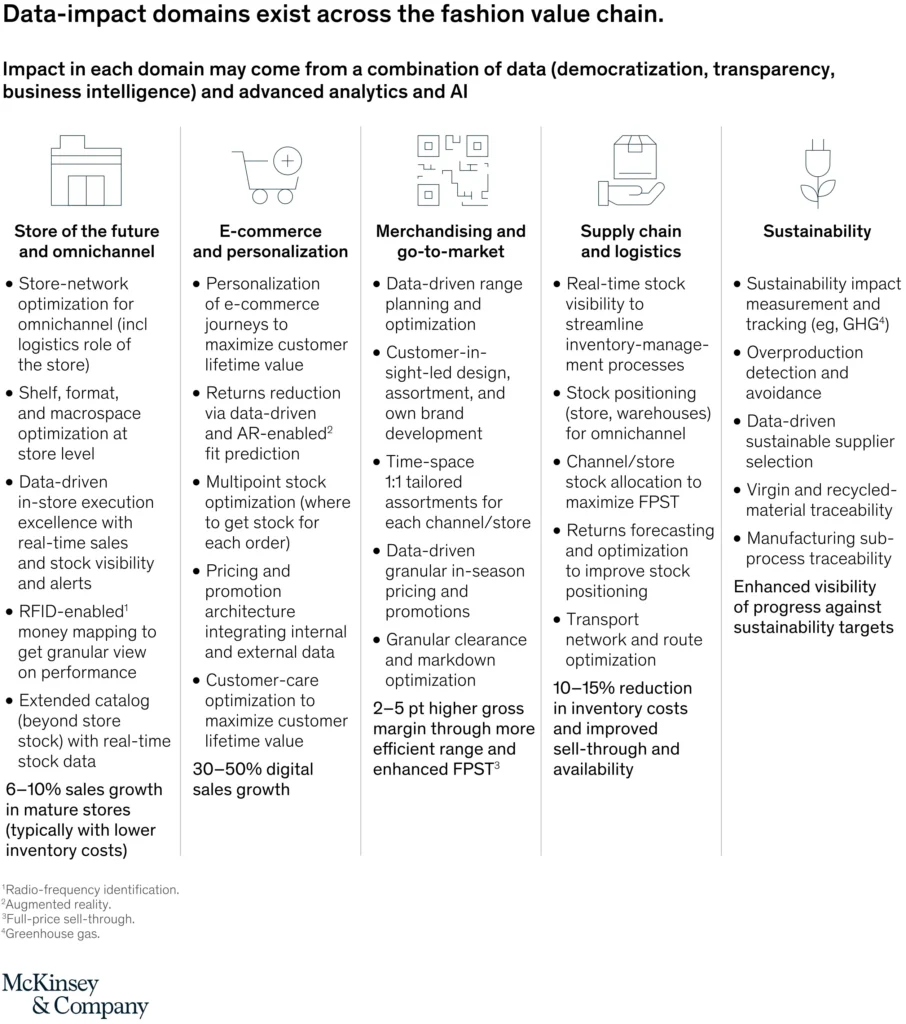
Image Source: McKinsey
Fashion labels long ago conceded that data drives modern decision-making. The next question, however, is less obvious: where do you source that data? That is the curiosity that now steals the spotlight.
Obvious close-range signals, such as transactional ledgers or platform heat maps, contribute valuable context but remain fragmentary. Whole trends elude your grasp if you ignore the wider landscape. To fill that gap, analysts now scan second-hand marketplaces, count pins on mood boards, watch which lines vanish from rival shelves, and track influencer endorsements as they appear in real time.
That’s where web scraping fashion apps and platforms becomes a powerful move—not just a nice-to-have.
What Is Web Scraping in Fashion, Exactly?
Let’s demystify it. Web scraping is simply a way to automatically collect large amounts of public data from websites. In fashion, this can mean pulling product listings, pricing, reviews, search trends, or even what’s showing up in “new arrivals” across multiple retail sites or marketplaces.
It’s not about spying. It’s about listening to what the market is saying—at scale.
The Platforms That Matter: Where the Fashion Signals Are
Different types of fashion data live in different places:
- Fast fashion retailers: What’s moving on Zara, H&M, ASOS, or Uniqlo gives you early signals on mass trends.
- Luxury e-commerce: Think Net-a-Porter, SSENSE, Farfetch—tracking what sells out here gives insight into premium preferences.
- Resale platforms: Depop, Poshmark, Vestiaire Collective—what’s being flipped or favorited can show what styles are staying relevant longer.
- Social commerce: Sites like SHEIN or apps like Pinterest and Instagram shopping tell you what’s trending with specific audiences right now.
By scraping these platforms regularly, fashion brands get a live feed of what’s catching attention—and what’s fading fast.
Going Beyond Trend Forecasts: This Is Real-Time Insight
Traditional trend forecasting still has its place. But let’s be honest—it’s slow, and often generalized. Web scraping gives you real-time, granular insights that are actually actionable. Not “bubble sleeves are back” six months too late, but “this specific $25 puff-sleeve top sold out in two days on three platforms.”
That’s the kind of signal that gets merchandisers moving.
What Brands Do With Scraped Data
Once collected, this scraped data doesn’t just sit in a spreadsheet. Fashion teams use it to:
- Track pricing strategies across competitors
- Analyze which products are being marked down (and how fast)
- Monitor which SKUs go out of stock fastest
- Identify quiet corners of the market where demand outpaces supply.
- Examine which hues, textiles, and shapes are capturing attention from Paris to Seoul.
Taken together, those insights fuel quicker, better-informed calls on product development, stock levels, pricing strategy, and promotional rhythm.
The Legal and Ethical Side
Web scraping can deliver valuable insights, yet it must be executed with discipline. Collect only data that is openly accessible, abide by a site’s robots.txt directives, and tune your request rates to match the server’s tolerance. Even seasoned engineers benefit from collaborating with legal advisors who understand the compliance landscape.
When done properly, web scraping solutions are not shady—they’re strategic.
Turning Fashion Analytics into Market Wins
Let’s face it—fashion is still a business. You can have the best runway show in Paris, but if your bestsellers are stuck in warehouses or your margins are tanking, something’s off.
That’s why fashion analytics isn’t just about being “data-driven” for the sake of it. It’s about winning—on the shelf, online, and in the minds of your customers.
Smarter Inventory = Fewer Stockouts and Less Waste
Every fashion brand has struggled with this: guessing how much of a style to produce, and watching it either sell out too fast or pile up in the stockroom.
With strong fashion data analytics, you’re not guessing anymore. You’re seeing how similar SKUs performed, how demand is trending across regions, and how fast competitors are selling through.
The result? Better buys, tighter production cycles, and way fewer markdowns.
Better Pricing Decisions That Protect Margins
Pricing in fashion has always been tricky. Go too low, and you lose your brand value. Go too high, and it collects dust.
Data helps brands walk that line more confidently. Want to know what a shopper would pay for a vegan leather trench in Mumbai vs. London? Analytics can tell you.
And with scraped data from retail sites, you can monitor competitor pricing in real time, so you’re never stuck playing catch-up.
Product Development That’s Informed, Not Blindfolded
When creative teams have access to real data on what’s trending, what’s flopping, and what your audience is leaning into—they design with more confidence.
It doesn’t replace creative vision. It sharpens it.
Instead of throwing ten styles at the wall and hoping two stick, brands are starting to make every SKU count.
Personalized Marketing That Doesn’t Feel Creepy
Let’s be honest—most fashion marketing is still too broad. “20% off everything” is fine, but what about recommending a restock in a shopper’s exact size, in a color they browsed twice last week?
With fashion analytics, marketing gets more personal without feeling invasive. You’re not tracking people—you’re understanding them.
That’s a win for the brand and the customer.
What Success Actually Looks Like
Fashion brands using data well aren’t just talking about it—they’re seeing results:
- Reduced return rates thanks to smarter fit and sizing recommendations
- Higher conversion rates from personalized product suggestions
- Better allocation of inventory by region and channel
- Shorter production cycles with fewer missteps
- More accurate forecasting across seasons
And in the long run? A more resilient, responsive business that doesn’t panic every time a trend changes overnight.
Challenges of Using Fashion Analytics (and How to Get It Right)
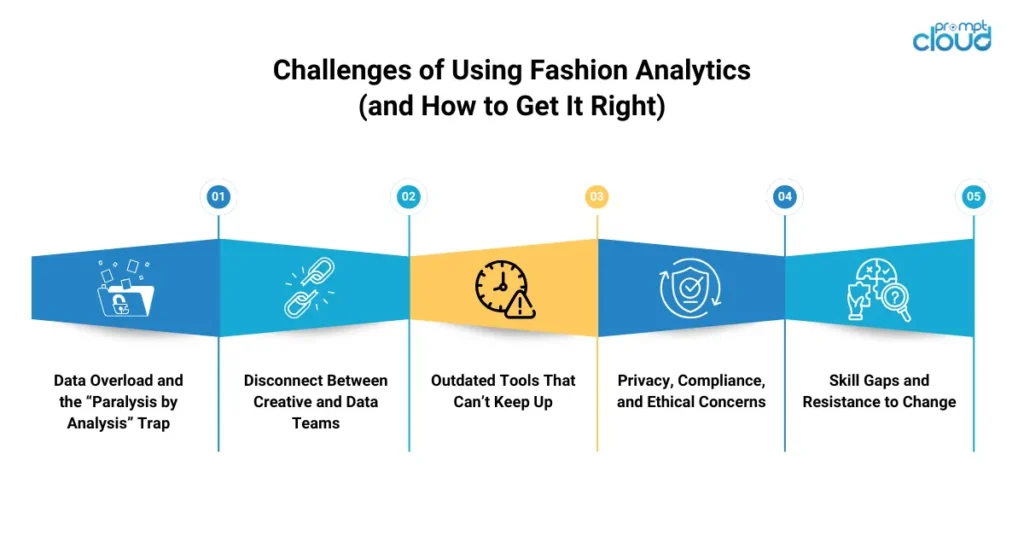
Let’s be honest: just having data isn’t enough. Most fashion brands aren’t suffering from a lack of information—they’re drowning in it. What’s harder is knowing which signals to trust, how to act on them, and how to build systems that don’t break when the next trend hits.
Here’s where things usually get messy—and how smart brands are navigating it.
Data Overload and the “Paralysis by Analysis” Trap
One of the biggest issues? Too much data, not enough clarity.
You’ve got sales numbers, engagement metrics, CRM dashboards, web scraping reports… and suddenly your Monday morning meeting feels like a spreadsheet graveyard. Without the right filters, all this information becomes overwhelming.
The fix: Start with a goal, not the data. Are you trying to reduce returns? Improve sell-through? Launch the right number of SKUs? Once the goal is clear, your data strategy gets a lot more focused.
Disconnect Between Creative and Data Teams
This one’s big in fashion: creative teams don’t always trust analytics. And honestly, who can blame them? No designer wants to be told by a dashboard what’s “in.” But the best results happen when instinct and insight work together, not against each other.
The fix: Make data accessible and visual. Stop dumping raw numbers into Slack. Instead, surface trend insights, visual dashboards, and scraped product signals in formats that creative teams can actually use.
It’s not about replacing creativity. It’s about giving it better context.
Outdated Tools That Can’t Keep Up
Legacy systems in fashion retail are notoriously clunky. Old ERPs, scattered Excel sheets, limited integrations—many brands are trying to run a modern analytics strategy on tech from 2012.
The fix: Invest in tools that can handle real-time data, especially if you’re serious about scraping from fashion apps or tracking fast-moving trends. If that’s not in-house yet, work with data partners who specialize in web scraping solutions and trend monitoring.
You can’t move fast if your systems are stuck in the past.
Privacy, Compliance, and Ethical Concerns
Especially when scraping or personalizing experiences, there’s a fine line between smart targeting and crossing the line.
The fix: Stick to public data, be transparent with customers about how their data is used, and work with vendors who understand compliance. Done right, fashion analytics is powerful and respectful.
Skill Gaps and Resistance to Change
Let’s be real—fashion isn’t filled with analysts. Merchandisers, buyers, and designers often come from creative or business backgrounds, and expecting them to suddenly become data experts? Not realistic.
The fix: Don’t try to turn everyone into a data scientist. Instead, build hybrid teams, offer lightweight training, and choose tools that make insights digestible, not intimidating. The goal isn’t to change who people are—it’s to give them better support.
The Future of Fashion Analytics: What’s Coming Next?
Fashion and tech haven’t always been best friends. But that’s changing fast. As the industry gets more comfortable with data, it’s also starting to ask: What more can we do with it? And the answer? A lot.
The future of fashion data analytics isn’t just about looking backward at what sold. It’s about predicting what’s next—sometimes before your customer even knows they want it.
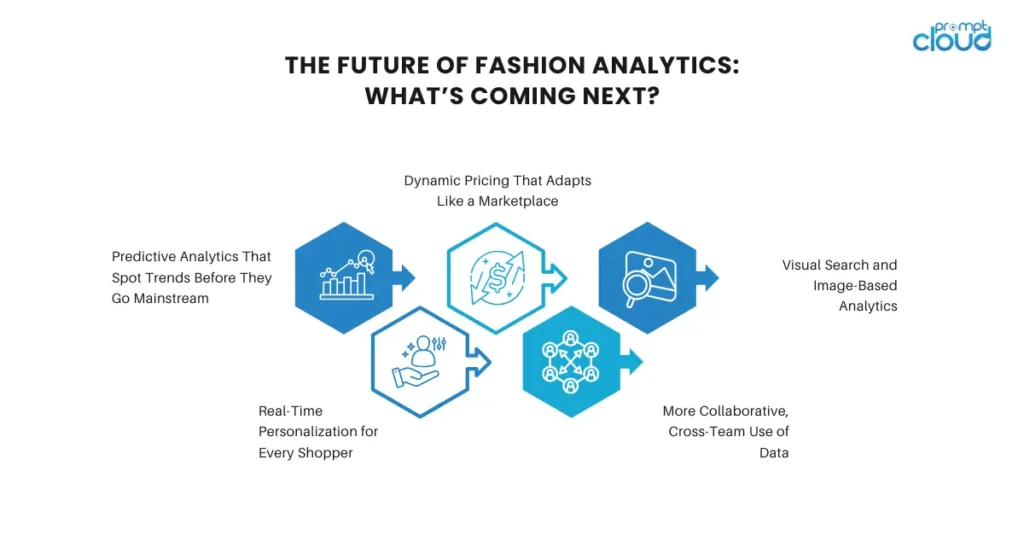
Predictive Analytics That Spot Trends Before They Go Mainstream
Right now, most brands use data to react. What sold last week? What’s trending today?
But predictive analytics takes that a step further. By analyzing how certain styles, colors, or categories emerge across different platforms, brands can forecast what’s likely to catch on next. It’s not science fiction—it’s already happening.
Imagine knowing a specific sneaker style is heating up in Berlin, two weeks before it takes off in New York. That’s where predictive models, trained on massive datasets (including web scraping fashion apps, resale platforms, and social data), start to make a difference.
Real-Time Personalization for Every Shopper
Personalization today often means product recommendations based on your last click. But what if your entire shopping experience—pricing, layout, and styling advice—changed based on your mood, weather, or time of day?
Sounds wild, but that’s where things are headed.
With live behavioral data and AI-powered tools, fashion analytics could help brands serve hyper-relevant content in real time. Think: styling suggestions based on what’s in your closet, or suggesting pieces based on what’s trending in your city this morning.
It’s not just e-commerce. Imagine walking into a flagship store and having staff know exactly what to show you—based on what you browsed earlier that week. No awkward guesswork. Just service that feels effortless.
Dynamic Pricing That Adapts Like a Marketplace
Fashion has been slow to adopt flexible pricing, but that’s starting to change. In the future, pricing may not be static. It might flex based on real-time demand, location, shopper behavior, and even competitor changes (captured via scraping).
Dynamic pricing is already common in travel and electronics. Fashion’s next.
Of course, it has to be done delicately, especially in luxury. But when used carefully, it can protect margins without alienating shoppers.
Visual Search and Image-Based Analytics
Shoppers don’t always search with words. Sometimes, they screenshot a look from Instagram and want that. Not something similar—that.
Visual search tools are getting better at identifying items from photos and serving up exact or close-match results. This requires image-based analytics, layered with trend data, to actually work well.
And brands that can offer that kind of smart discovery? They’ll own the moment.
More Collaborative, Cross-Team Use of Data
Right now, data often lives in silos—marketing has their reports, product teams have theirs, retail gets a slice. The future of fashion analytics is collaborative.
Imagine one connected dashboard that surfaces the right insights to the right teams, in real-time. Designers see what’s trending visually. Marketers see what’s converting. Buyers see gaps in demand.
That’s where this is going. Less clutter. More clarity.
What’s Next for Brands That Want to Compete Smarter?
If there’s one thing the last few years have shown us, it’s that fashion can no longer afford to rely on guesswork. Whether you’re moving fast like Shein or staying selective like Hermès, data is now part of the creative and commercial process, not separate from it.
Fashion analytics isn’t just about keeping up with trends—it’s about seeing them sooner, acting on them faster, and turning insight into real business results. From early-stage product planning to global merchandising and marketing decisions, brands that build strong analytics practices will outperform those that still rely on “gut feel.”
And no, you don’t need to build a massive in-house data team from scratch. That’s where partners like PromptCloud come in.
At PromptCloud, we help fashion brands tap into live market signals through custom web scraping solutions, pulling real-time data from fashion apps, e-commerce platforms, social channels, and beyond. Whether you want to track pricing strategies, monitor new drops across competitors, or decode trend patterns across geographies, our fashion-focused data delivery helps you stay one step ahead, without drowning in dashboards.
If you’re ready to make fashion analytics part of your competitive edge, PromptCloud can help you get there faster. Contact us today!
FAQs
What is fashion analytics?
Fashion analytics is about turning data into decisions. It’s how brands figure out what’s working, what isn’t, and what customers want next. That includes analyzing everything from sales and returns to social buzz and product performance. Whether you’re planning a new collection or trying to reduce excess inventory, fashion analytics gives you the visibility to move with purpose instead of reacting blindly.
How is data analytics used in the fashion industry?
Data analytics shows up across the board—from design and buying to marketing and logistics. Brands use it to track which styles are gaining traction, monitor sell-through rates by region, identify the best price points, and even predict future demand based on what’s trending right now. It also plays a big role in personalization, understanding what different types of customers are drawn to and how to serve them better. In short, it’s how fashion companies stay relevant and profitable in a market that changes by the minute.
What kind of data is most valuable in fashion analytics?
The most valuable data depends on what you’re trying to solve. If it’s about trends, you need external signals—what’s being liked, shared, searched, or sold on other platforms. If it’s about operations, internal data like purchase behavior, returns, and sell-through is key. Many fashion brands also use web scraping fashion apps and retail sites to pull live pricing, product drops, and stock movement. The real value comes from combining internal insights with external context so you’re not just looking inward—you’re seeing the whole market.
How does fashion data analytics help with trend forecasting?
Instead of waiting for a trend report months after the fact, analytics lets you see what’s bubbling up now—across platforms, countries, and customer segments. You can track what’s rising in resale markets, what shoppers are saving to wishlists, or what’s getting the most attention on social commerce platforms. The goal isn’t just to react—it’s to act early. Brands that use data well can spot microtrends, test styles in limited runs, and go big only when the signals are strong. It’s faster, smarter, and far less risky than doing it the old way.
Can luxury brands benefit from fashion analytics?
They already are—and not in the same way as fast fashion. For luxury, it’s less about speed and volume, and more about understanding their high-value customers in deeper, more nuanced ways. Luxury fashion analytics helps brands offer more personalized service, optimize exclusive drops, and curate in-store experiences that feel tailored—not generic. It also plays a big role in global merchandising—helping brands decide where to launch specific products, how to price them, and which markets need more attention.
What tools are used in fashion analytics?
There’s no one-size-fits-all tool, but most brands use a mix of internal reporting dashboards, customer analytics platforms, and external web scraping solutions. Some build in-house systems. Others work with data partners who specialize in collecting and structuring the kind of data they need—like competitor pricing, product visibility, or trend forecasting. The best setups combine live data feeds, strong visualization, and easy access for cross-functional teams. If it’s only usable by the data team, it’s not enough.
Is web scraping legal for fashion data collection?
Yes—when it’s done correctly. Web scraping involves collecting publicly available data from websites, and it’s widely used across industries, including fashion. What matters is how it’s done: responsible scraping respects rate limits, avoids private or gated data, and follows legal guidelines. If you’re working with a trusted partner (like PromptCloud, for instance), you’re not just getting the data—you’re getting peace of mind that it’s being handled properly and ethically.
What’s the difference between internal analytics and scraped data?
Internal analytics tells you how your business is performing—your sales, returns, customer behavior, and product performance. Scraped data gives you a much broader view. It tells you what’s trending across the industry, what competitors are pushing, which items are selling out elsewhere, and how the market is shifting in real time. Together, they create a full picture—because understanding your own performance isn’t enough if you can’t see what’s happening around you.
How can fashion brands get started with analytics?
Start with one clear objective. Are you trying to reduce overstock? Plan collections better? Improve pricing? Once you know what you’re trying to fix, it’s easier to decide what data you need. You don’t have to build everything from scratch—many brands start by working with external data providers or lightweight tools, then scale as they grow. The key is to make data part of everyday decisions, not just something that shows up in a report once a quarter.
Why is fashion analytics important for staying competitive?
Because trends move faster than ever, and customers expect better every time. Without analytics, you’re guessing—hoping a style lands, hoping your prices are right, hoping stock won’t pile up. With analytics, you’re planning from a place of insight. You know what’s resonating, what’s coming, and how to meet demand without wasting time or money. In today’s market, that kind of clarity isn’t just helpful—it’s essential.

